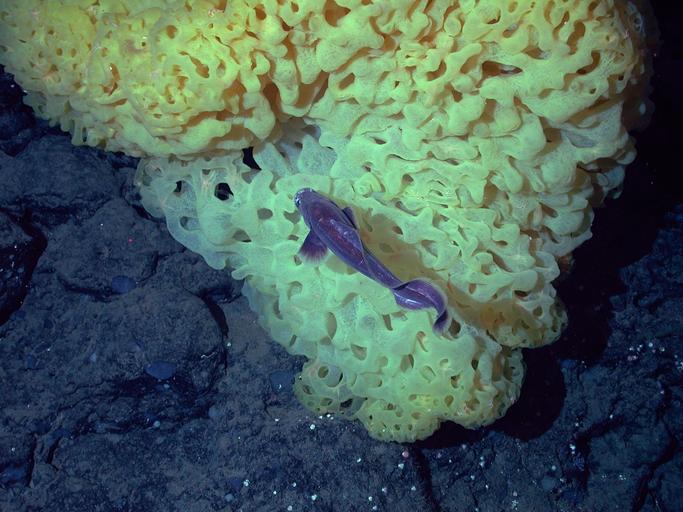MAKE A MEME
View Large Image

| View Original: | MBNMS_-_Yellow_Ruffle_Sponge_-_Davidson_Seamount.jpg (2048x1536) | |||
| Download: | Original | Medium | Small | Thumb |
| Courtesy of: | www.flickr.com | More Like This | ||
| Keywords: monterey bay noaa/mbari noaambari mbnms yellow ruffle sponge deep sea fish ocean ecosystems california coast davidson seamount texture indoor food Mountains below the surface: Located in Monterey Bay National Marine Sanctuary, Davidson Seamount is an underwater mountain. A submerged volcano rising some 7,250 feet above the sea floor, it's one of the largest seamounts in US waters! But even with its gargantuan size, the peak of Davidson Seamount lies 4,500 feet below the surface. Because of its depth and distance from shore, the seamount is relatively undisturbed by human activity. Its surface teems with deep-sea corals, crabs, basket stars, shrimp, and expansive sponge fields harboring other deep sea critters -- like this sponge and fish! In 2002, scientists at Monterey Bay National Marine Sanctuary began partnering with other organizations like the Monterey Bay Aquarium Research Institute (MBARI) to explore the biological importance of the seamount, and how human activity might shape deep-sea ecosystems like this one in years to come. With the data the team collects, we're able to adapt management practices along the California coast to protect important ecosystems in the deep sea. Photo Credit: NOAA/MBARI Mountains below the surface: Located in Monterey Bay National Marine Sanctuary, Davidson Seamount is an underwater mountain. A submerged volcano rising some 7,250 feet above the sea floor, it's one of the largest seamounts in US waters! But even with its gargantuan size, the peak of Davidson Seamount lies 4,500 feet below the surface. Because of its depth and distance from shore, the seamount is relatively undisturbed by human activity. Its surface teems with deep-sea corals, crabs, basket stars, shrimp, and expansive sponge fields harboring other deep sea critters -- like this sponge and fish! In 2002, scientists at Monterey Bay National Marine Sanctuary began partnering with other organizations like the Monterey Bay Aquarium Research Institute (MBARI) to explore the biological importance of the seamount, and how human activity might shape deep-sea ecosystems like this one in years to come. With the data the team collects, we're able to adapt management practices along the California coast to protect important ecosystems in the deep sea. Photo Credit: NOAA/MBARI | ||||